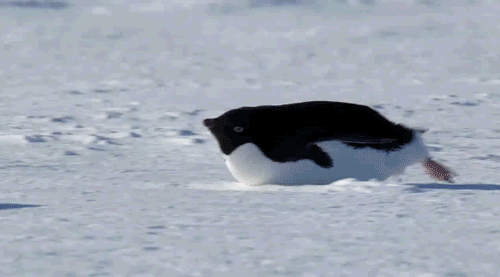

Swimming with Summarization
Reading to Learn
Rationale:
Reading is the very first skill, in most cases, that we use when attempting to procure new information. Just as the process of reading takes a long time to progress, so does the process of finding significant information. Summarizing is a skill that all beginning readers need to rehearse in order to be successful in reading comprehension. Once readers can identify the main points of an article, they become a more accurate researcher, writer, and reader. During this lesson, students will get the opportunity to analyze a number of articles in attempt to find the main points of the text. Through these practices, the students will gain experience in summarization and eventually, acquire the necessary skills to summarize an article simply by reading it once.
Materials:
-
Pencils (one for each student)
-
Paper
-
Class set of yellow highlighters
-
Class set of red highlighters
-
Summarization Activity Checklist:
-
_____ I have written my topic sentence.
-
_____ I have found supporting details to help answer the question.
-
_____ I have removed unimportant information by crossing it out.
-
_____ I have removed repeated ideas.
-
_____ I have written a 3-5-sentence summary.
-
-
Individual Rubrics
-
Are Penguins Clumsy? Transparency for demonstration
-
Individual Hand Outs for
-
Are Penguins Clumsy?
-
Do All Penguins Live in Cold Climates?
-
Procedures:
1. Introduce Summarizing.
Say: “Today, our lesson is going to be about summarizing. Who can remind me what summarize means? Very good! To summarize means to find the most important information in an article. In order to find this important information, what are some things we might have to do? Yes, we need to get rid of all the information that does not really help us answer the overall question. Our lesson today will help you become master summarizers!”
2. Hand out “Summarization Checklist.”
Say: “What I am passing out is something I like to call a ‘Summarization Checklist.’ This piece of paper has all the steps listed in order to help me summarize while I read. In order to become a good summarizer, we must first know what our summary is going to be about. The first step is to find the main idea in a reading passage and develop a topic sentence. Once I create a topic sentence, I can put a check mark on that line to help me keep track of what I have done. Next, it is important to provide enough detail when summarizing an article. Our next step is to read through the article and find the supporting, or helpful, details. That being said, we also need to be pay attention to the unimportant details that are not absolutely necessary to include in our summary. It is easiest to mark through these unimportant details. Sometimes articles will state the same idea multiple times. It is important that we recognize why the importance of that detail, because often times they are crucial, but once we have seen it once, we don’t need to see it again. After you have found your supporting details and eliminate unimportant or repeated details, you can begin to write your summary. A summary is a brief overview of what you have just read. This means it needs to stay short. Be sure not to copy word for word what was stated in the article, but to create a summary using your own words as much as you can.”
3. Three Main Rules:
Say: “As you can see, from your summarization checklist, there are really only three main rules that you need to remember when you are summarizing.”
· The first rule is to find the important details that will help you write your summary.
· The second rule is to eliminate the unnecessary and unrelated details that you believe will not help you summarize.
· Last but not least, you need to organize your ideas in a thoughtful way beginning with your topic sentence and continuing with the supporting details you found earlier.
“If you can stick to these three rules, summarizing will be a easy!”
4. Hand out copies of Are Penguins Clumsy?
Say: “I am handing out an article titled, Are Penguins Clumsy? Before we begin, does anyone have any idea if they might be? Well we are going to find out in a second, but first, there is a vocabulary word that we might need to know before reading this passage.”
“The word is “mobility”. Does anyone know what “mobility” means? Let’s try and use context clues to figure out the meaning of the word. Everyone look at the sentence of the passage. It says, “It is true that the penguin’s mobility on land is measured by a waddle.” Mobility on land, if they have mobility on land, do you think we are moving, or we are fishing? Right! Mobility means the ability to move freely and easily. It does not mean to fish. So would someone in a wheel chair have mobility? Great! No they would not because they cannot move freely and easily. Help me finish this sentence. My mobility is limited because… Possible answer: I have a broken leg. Very good! I think we all have an understanding that mobility is moving around freely. So we are going to see how the penguin’s mobility is measured.
5. Read the article aloud to the class.
Say: Now that we know that Penguins are clumsy because of their waddle let’s think about how we would summarize this passage. Well, first, what is this article talking about? Penguins, very good! So we know that Penguins are our main idea, Penguins needs to be highlighted yellow because it is important. Now let’s find some important details that help us answer the question, are penguins clumsy? Let’s look at the second paragraph. We need to see what it is the author is saying about penguins. Therefore, we need to look for key details and action words that will help us reach our conclusion.
“The waddle effect happens because penguins have a very short stance, or distance between their feet when walking. Imagine having your legs tied together just above your ankles. Then think about walking like that. Better still, have you ever gone to try on a pair of shoes at a big super store like Wal-Mart or Target – where the shoes are tied together? When you attempt to walk in the shoes as you’re trying them out, it’s pretty difficult, right? And you end up sort of rocking side-to-side as you walk. That’s what it’s like for a penguin.”
Say: “Let’s begin by highlighting with yellow some of the words or ideas that we see a lot of. I see the word penguins and waddle a lot; these must be important. Now I need to find out why they are important, so I must look at the verbs the author uses. As I am highlighting these words in red, I am noticing that the waddle is how the penguins move about. Because the article says that penguins have a short stance, meaning a small distance between their feet when walking. Now I need to reread the paragraph and cross out the things that are not important. These include descriptions, repeated topics, and extra information that takes away from the main point of the article. We can really cross out the second sentence because it does not answer whether or not penguins are clumsy; it is just relating it to us. We can cross out the next three sentences because they continue to relate the waddling to what it would be like for us instead of explaining if the penguins are clumsy. We can keep the last sentence, however, because it answers the question that yes penguins are clumsy because of their waddle. What we know is that penguins are clumsy because of their waddle and small distance between their body and feet. From this paragraph alone, we’ve summarized that penguins are clumsy. Now, try and finish the article on your own!”
6. After giving the students time to summarize, inform them that we must look for a topic sentence.
Say: “Now that we have all of our important information, what will our topic sentence be? Remember, the topic sentence includes the main idea of the passage. We’ve learned that penguins are clumsy because of how their body is made. My topic sentence could be: ‘Penguins are clumsy.’”
Continue writing the summary with the students, looking for supporting details and excluding any unnecessary information. Once finished, review the summary with the students by using the summarization checklist.
Say: “Now that we are finished with our summary, let’s go back and check if we have all the necessary components for a good summary. Let’s see, do I have a topic sentence? Did I include supporting details? Did I get rid of unimportant information? Is my summary 3-5 sentences? Well done! We have a wonderful summary!”
7. Pass out handouts of Do All Penguins Live in Cold Climates?
Say: “Now that we have practice summarizing an article together, I want you to try on your own! This article is about penguins. It discusses characteristics if penguins and how they live. Let’s read to discover if all penguins live in cold climates?
Assessment:
To assess the students on the process of summarizing, I will ask them to turn in their copy of the passage and examine it to see if they have picked out and crossed out the correct details. I will read over their summaries as if I did not know the answer.
Comprehension Questions?
-
How do penguins get around?
-
Why do penguins not all live in cold climates?
-
How are penguins different from birds?
The students will be graded using this rubric:
When summarizing, did the student:
Yes or No:
Construct a simple, topic sentence answering the question?
Delete unimportant information?
Include supporting details?
Delete repeated information?
Organize summary with big idea?
References:
-
Discovery Kids, Are Penguins Clumsy?
http://discoverykids.com/articles/are-penguins-clumsy/
-
Discovery Kids, Do All Penguins Live in Cold Climates?
http://discoverykids.com/articles/do-all-penguins-live-in-cold-climates/
•
http://csk0009.wixsite.com/eportfolio/reading-to-learn
